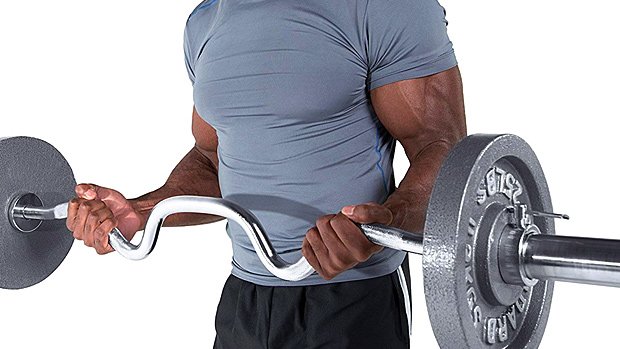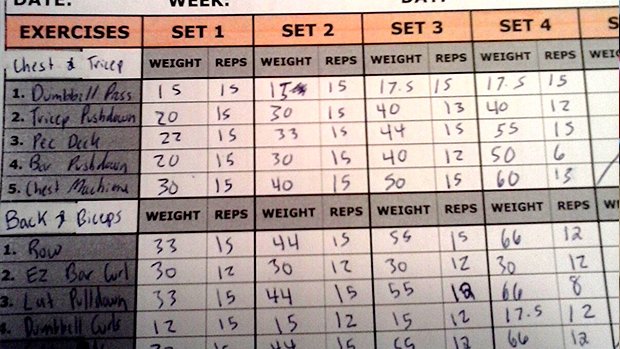by Domenic Angelino
Better Than Percentage-Based Progression?
Using your 1RM to determine your loading? You may be missing out. The rep zone method may be better for some lifters. Check it out.
1RM Percentages or the Rep Zone Method?
You’ve probably used your 1RM (one rep max) to figure out and manage training loads. It’s a method supported by thousands of studies and millions of real-world workouts. But that doesn’t mean it’s the best method for everyone all the time. For some, the “rep zone method” is better.
Let’s break it down and take a look at an intriguing new study.
How 1RM For Loading Prescription Works
How 1RM For Loading Prescription Works

For noobs who’ve found their way here, the 1RM is the heaviest weight you can lift for a single rep on an exercise. The 1RM is a reference point for exercise intensity prescription.
Certain percentages of your 1RM are associated with certain rep maximums. For example, if you take a load that’s around 90% of your 1RM, you’ll only be able to do about 4 reps before you reach failure (1). So that’s your 4RM.
Due to this relationship, you’re able to use your 1RM to determine which load you should use for each exercise and the number of reps you should aim for within each set. This allows you to manage your training so your load and reps help you achieve your training goal.
As you get stronger, you can gradually increase it by following a specific progression rule. Try increasing the load for an exercise by 2.5% after completing all prescribed reps for two workouts in a row. Alternatively, you can update your 1RM to reflect your strength increase over time by either testing your 1RM directly or updating your predicted 1RM using the relationship described above.
So while using your 1RM for load prescription is effective, new evidence supports the “rep zone method” for increasing muscle size.
The Rep Zone Method Explained
The Rep Zone Method Explained

The rep zone method is pretty flexible. Here’s how it works:
1. CHOOSE A REP RANGE YOU’D LIKE TO USE FOR AN EXERCISE.
Pick a rep range that best supports hypertrophy for that exercise. If you want to do the barbell incline bench press, try something like 9-12 reps per set.
2. PICK A WEIGHT THAT ALLOWS YOU TO PERFORM A MAXIMAL EFFORT SET WITHIN THAT REP RANGE.
Select the load based on how you feel that particular day. If fatigue (from lack of sleep, for instance) makes you feel like you can’t hit the minimum reps in your target range, go lighter than normal.
If you feel energized and think you can hit the higher end of your rep range in your target range, go a little heavier. If you feel like you can add 15 pounds to the bar and still stay in your target rep range, go for it.
3. AS YOU PERFORM YOUR SETS, ADJUST THE WEIGHT YOU USE AS NEEDED.
If your performance drops between sets due to neuromuscular fatigue, decrease the load you’re using accordingly so that you stay in your target rep range.
If you’re able to perform more reps than expected, increase the load you’re using accordingly so that you stay in your target rep range.
4. REPEAT THIS PROCESS FOR EVERY EXERCISE IN EVERY WORKOUT, REACTING TO YOUR NEEDS AS YOU GO.
As you gradually get stronger and select appropriate loads for each workout, your training load will increase over time. This increase will drive a significant increase in hypertrophy.
In short, just pick a rep range that works for your goals and adjust the load so that your max effort sets always fall within that range.
Why Does The Rep Zone Method Even Matter?
Why Does The Rep Zone Method Even Matter?

Researchers recently analyzed two resistance training interventions and their loading schemes (2). Participants in both interventions were all healthy (but untrained) adult males: a population able to quickly adapt to the demands that lifting imposes.
The researchers evaluated muscle size (muscle cross-sectional area), strength (1RM), and the overall work done (volume load, or sets x reps x load). They evaluated these variables both before and after a 24-workout training period.
The researchers found that participants who used the rep zone method experienced significantly greater hypertrophy (muscle cross-sectional area) than the percent 1RM group. The effect was so great that the participants using the rep zone method experienced an increase in muscle cross-sectional area that was around 100% greater than the increase experienced by the percent rep max group: a 16% increase versus a 7.86% increase.
The rep zone method group also increased the amount of work done within each workout (volume load) significantly faster than the percent 1RM group. The rate of change of volume load was also around 100% greater in the group using the rep zone method.
So, the researchers concluded that the rep zone method was more effective at driving hypertrophy than the percent 1RM method, at least for the population of their study.
Why The Rep Zone Method Works
Why The Rep Zone Method Works

Surprised by the research? Don’t be. The rep zone method is pretty flexible and reactive on a workout-to-workout basis. It allows you to adjust the load based on what you’re capable of in any given workout. This is important because your capacity will fluctuate between workouts depending on a bunch of factors.
Some of these factors include diet, sleep habits, stress, and fatigue from other non-lifting activities. Although this can apply to you at any point in your training, it’ll be most applicable during your first few years of lifting.
Having a loading scheme that corrects for fluctuations in your capacity is important. Every workout that it makes your training slightly more efficient will add up over time.
Another reason: The rep zone method is more responsive to changes in your actual strength over time. Using a more traditional percent 1RM method for load prescription, you’d have to either adjust your 1RM intermittently or gradually increase the load you use by following a fixed rate progression model (like increasing by 5 pounds every X sessions where all reps are hit).
This is effective when progress is linear or occurs slowly, like when you’re more advanced. But if you progress very quickly (as a beginner), then your loading progression model won’t always be able to keep up with your improvements. This is why the rep zone method’s responsiveness matters. You won’t have to wait for the day you update your 1RM calculations.
You also won’t have to increase the load and reps you use at the speed of a predetermined progression model. You can increase the load as you get stronger.
Ultimately, this all comes down to the rep zone method focusing on reacting to you and your capacity on a per-workout basis. Conversely, the percent 1RM method focuses on predicting your capacity indirectly.
Being more reactive allows the rep zone method to increase the volume load of your workouts more quickly when your body is able to adapt to your workouts quickly, which means you’ll drive hypertrophy more quickly. This was evident in the study, given the rep zone method led to an increase in volume load between workouts that far outpaced a more traditional loading scheme. This works great during periods where you can adapt quickly.
You’ve probably noticed that most of the benefits of the rep zone method are reduced for lifters who are more advanced. A loading model that’s very reactive won’t benefit you very much if you’re super advanced. You also won’t have to worry about periods of fast growth outpacing your progression model since being advanced means that you aren’t able to progress very quickly.
If you’re more advanced, stick to the traditional percent 1RM method. Since your body develops a resistance to adaptation over time, you’ll benefit more from using a loading scheme that’s able to consider the bigger picture. It’ll allow you to forge a routine around producing a potent enough stimulus to actually convince your body to adapt.
Practical Takeaway
Practical Takeaway

The rep zone method may help accelerate your pursuit of hypertrophy if you:
- Are fairly new to lifting.
- Are coming back to lifting after a long break.
- Are subject to impactful fluctuations in things like diet, sleep, stress, and non-lifting-related fatigue between workouts.
If none of the above apply to you, then the percent rep max method will probably be more effective at supporting your hypertrophy goals.
If you want a simple roadmap for your training, consider the following:
- When you’re starting out and can adapt quickly, go with the rep zone method to speed through the earlier phases of your training career.
- Once you’re advanced, switch to the more traditional percent 1RM method.
Thanks for the article! I don’t necessarily disagree with anything written here, but I’m unclear how you arrived at the conclusion that percentage-based training will favor an advanced lifter more than the auto-regulation described here. That wasn’t studied, and I feel we could easily make a logical argument that I’m less likely to predict a 2% improvement accurately with someone near the top of their ability. What drove this takeaway?
Personally I like a % based system as it regulates me and my stupidity.
I have also found that on days when I feel rubbish and still have a weight to hit, I know I have to hit it so I do. If I had the flexibility I’m not sure that would be good for more personally but.
But I’d class myself as an intermediate lifter so maybe this isn’t for me yet.
It’s funny how we all look at things differently. I prefer rep zones but for similar reasons you said you like percentages.
When I feel rubbish I still get to the money reps even if I’m not as strong on that day. With the fluctuation of feeling rubbish or good, a percentage day could mean too much of a grind to try to get my reps or it feeling like a warm-up.
I feel that percentages are definitely better if doing the same lift multiple times a week though. And in parallel with that, better for strength gains on individual lengths.
There’s more depth than “this” or “that” is better. It’s dependent on goals, mentality, and the rest of your programming.


